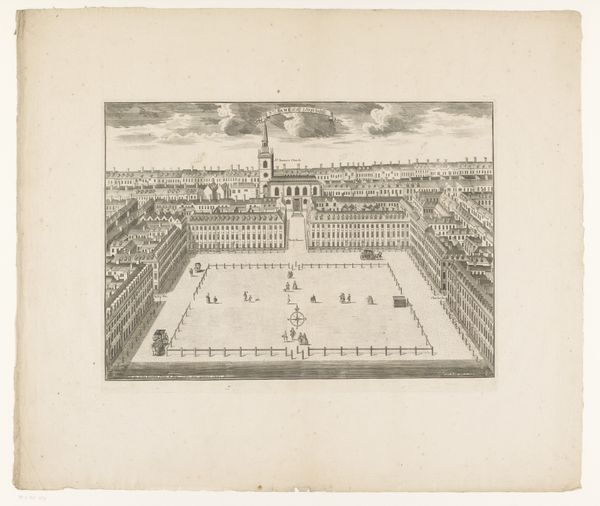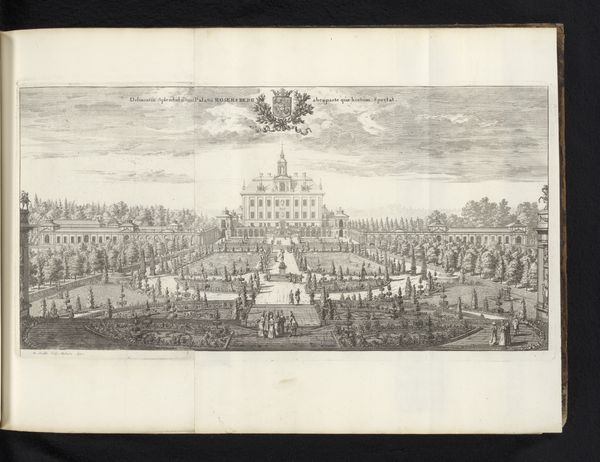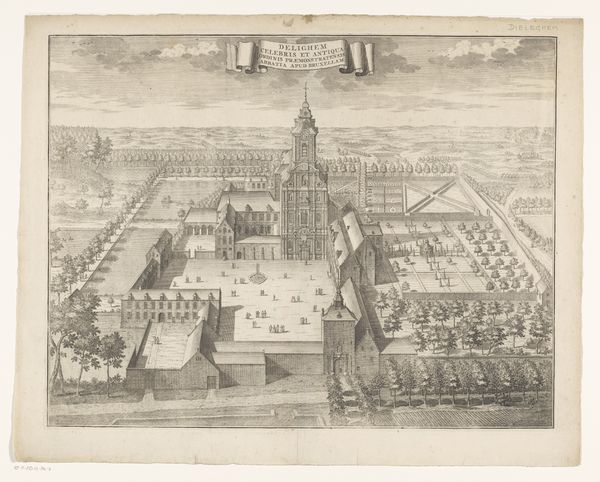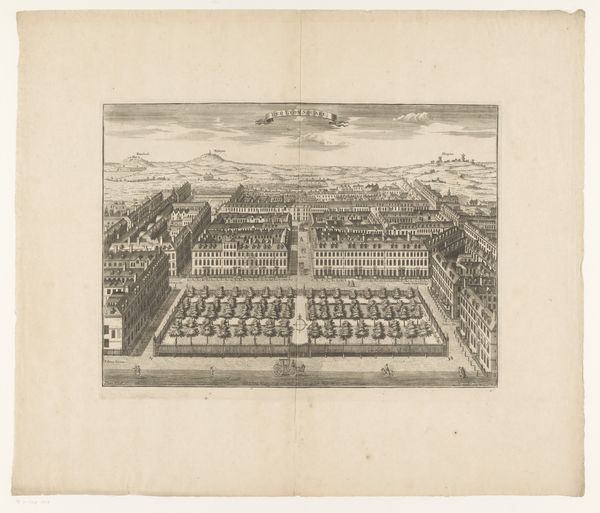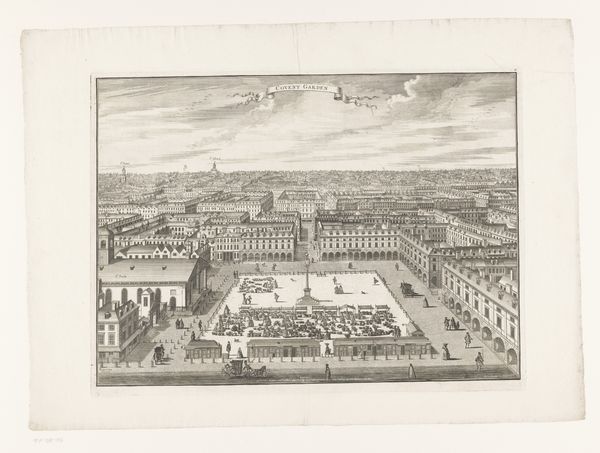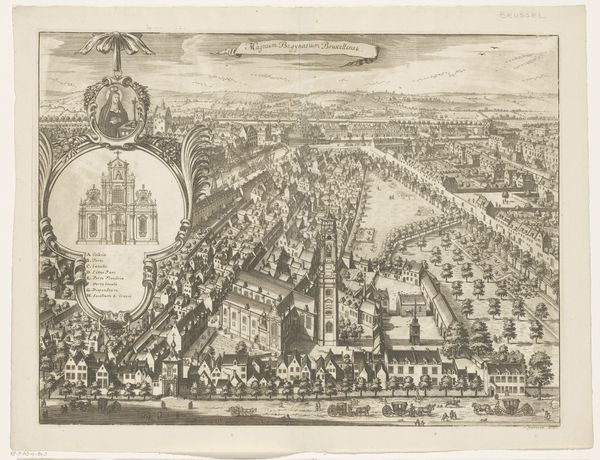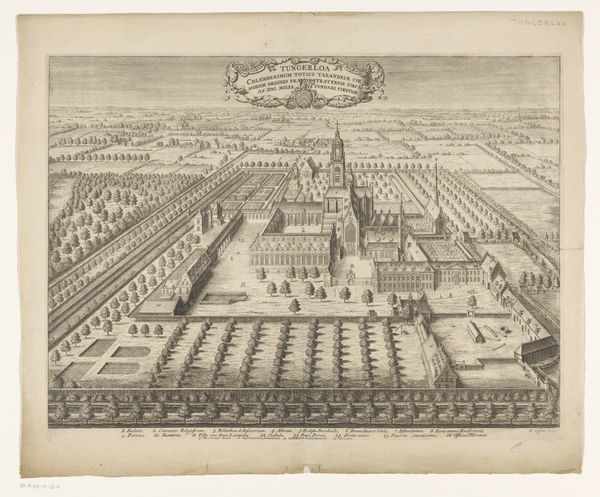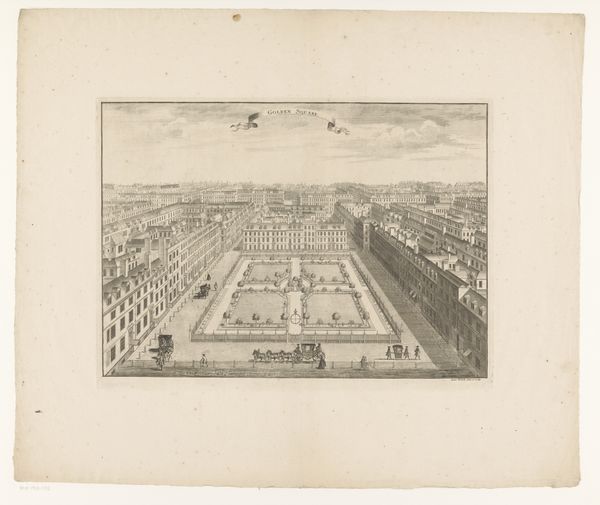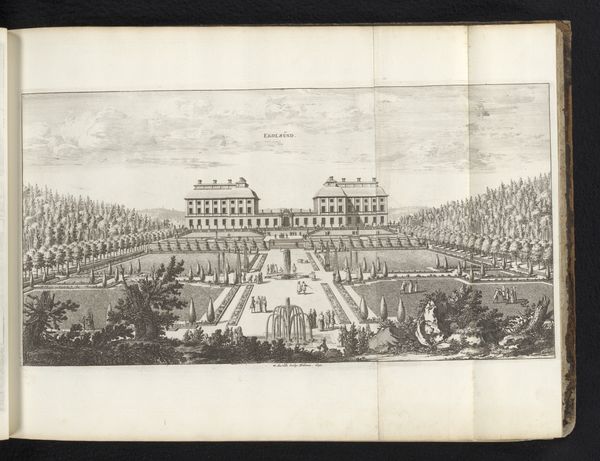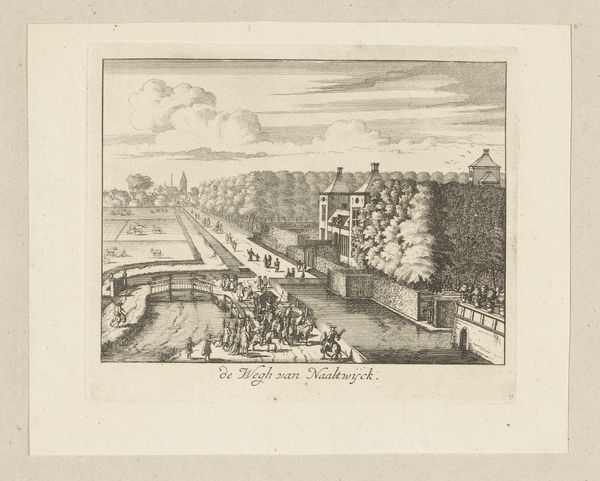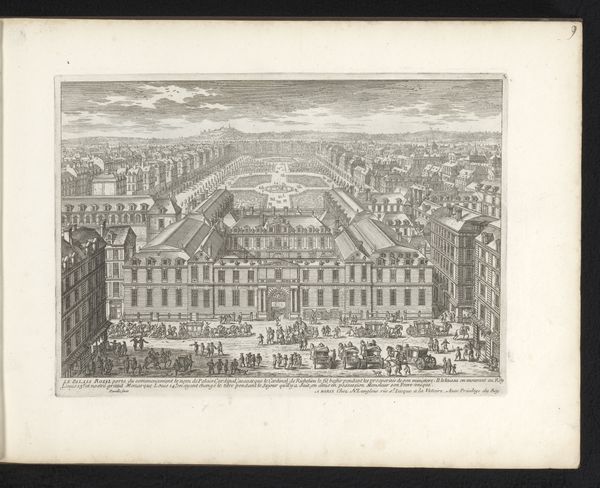
drawing, print, etching, paper, engraving
#
drawing
#
baroque
# print
#
etching
#
paper
#
cityscape
#
engraving
Dimensions: height 343 mm, width 464 mm
Copyright: Rijks Museum: Open Domain
Editor: Here we have "Gezicht op Charterhouse Square" by Sutton Nicholls, dating from around 1720 to 1731. It’s an engraving and etching on paper, showing a bird's-eye view of a London square. I’m struck by the level of detail captured. What do you see in this print? Curator: It’s a fascinating document of urban development, isn’t it? Look at the lines, the precision; it tells us about the skilled labor involved in producing these prints, and their role in shaping perceptions of the city. This wasn't just art; it was a commodity, a piece of London’s real estate market being disseminated. Editor: A commodity, you say? So, who would have been buying and circulating these prints? Curator: Landowners, merchants, prospective residents, perhaps even used in city planning. These prints demonstrate a specific means of production – etching and engraving – to essentially create and distribute reproducible images. It highlights the economic relationship between artmaking and consumption during this period. Think of it as early advertising material, tied directly to urban capital. Editor: That’s a perspective I hadn’t considered! So, beyond just depicting a place, it actively participated in the economic activities of that place? Curator: Precisely. Consider the materiality itself – paper, ink, the metal plates used for the engraving. The quality speaks to the market it aimed to capture: affluent people invested in shaping the social status connected to the buildings featured here. Can you think of other ways this might represent labor through material use? Editor: Hmm, I wonder how the supply of paper or the engraver’s skill set influenced production? Curator: Exactly. The availability and cost of those materials played a significant role. These details are important for understanding not only the aesthetics, but the commercial role that urban views like this had in their day. Editor: I see it now. So, analyzing its materiality and means of production can illuminate the artwork’s socio-economic context and function. Curator: Absolutely, we can appreciate the cityscape’s inherent contribution as a driver of market activity.
Comments
No comments
Be the first to comment and join the conversation on the ultimate creative platform.

